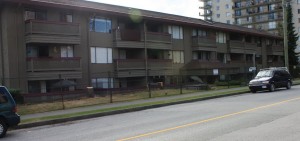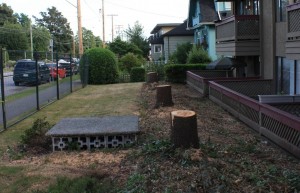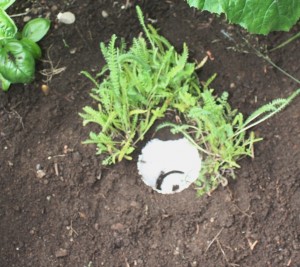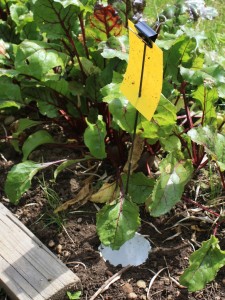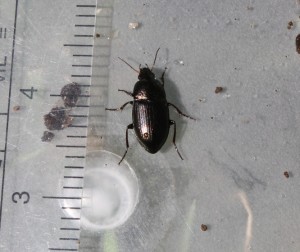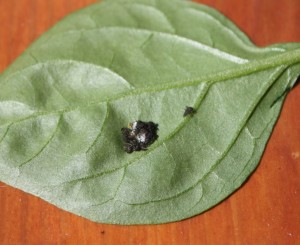We all agree that anthropogenic climate change is happening, and that Canada is one of the worlds worst offenders per capita (If not, perhaps you should review a bit of this and come back later). The question is what are we going to do about it?
Carbon Offsets are one of those ideas that might sort of work, much like a carbon tax, but their success and usefulness depends on very careful legislation. The problem is, in our hyper-policial world where logic and science rarely come into play during he drafting of legislation, they can seriously go wrong. I present to you as evidence, the Pacific Carbon Trust.
Some of you may know about the Climate Action Charter. This makes all local governments who “voluntarily sign” the charter, to be “carbon neutral” by 2012. Of course, it isn’t really voluntary, as these communities are offered a 100% rebate of the carbon taxes they pay if they fulfill this commitment. There is some strange calculus between reducing the carbon they use to the point where the savings in the taxes offset the extra carbon offsets you need to buy to get back to “carbon neutral”, but I leave that for the accountants.
The end result or this coercion is that Cities do often-good sometimes-questionable actions to reduce their carbon use. Retrofitting City buildings to be more energy efficient, introducing anti-idle policies and investing in a more efficient fleet of vehicles to line up around the token guy with the shovel, creating District Energy Utilities where the City’s ice rink takes all the waste heat it creates making ice and uses it to heat the water in adjacent swimming pool. You can also throw in building compact, transportation-efficient cities. These are all reasonable measures that should save taxpayers money in the long run and reduce the need to oxidize hydrocarbons. These are good things.
(Notably, one of any City’s largest green house gas producing activities is the generation and disposal of solid waste, and that is exempt from the Charter. I could go on…)
Recognizing that Cities can’t just stop burning fuel tomorrow, there is en expectation that Cities will use carbon offsets. This idea being that organizations that make money producing carbon dioxide can be provided economic incentives to not produce so much carbon dioxide, and sell that non-production of carbon dioxide to someone who cannot help but produce carbon dioxide. So for every tonne of carbon dioxide that a City produces, it will pay $25 to someone else to not produce a tonne of carbon dioxide. Alternately, they could just pay the $25 in carbon tax to the Provincial coffers.
I have had discussions with Municipal Energy Managers and GHG-reduction experts who are convinced this is a good idea for all kinds of traditional economics reasons. It is, they argue, the same as carbon tax, in that is puts a “cost” upon the production of pollution that can be used to directly reduce pollution. There are also some significant GHG Experts who think it is a terrible idea.
However, much like our completely misguided and ineffective carbon tax (another topic), the way the offset market is managed in BC is both unproductive and ethically compromised. You see, our local governments must purchase their carbon offsets from an entity known as the Pacific Carbon Trust. This is a Provincial Crown Corporation that operates under the direction of Kevin Falcon. Guilt by association is never a good idea, but considering Falcon’s greatest accomplishment up to this point is the ramming through of the largest climate crime of the last decade in this province, well, we know GHG reduction is not really a priority of his.
That said, we can measure the Pacific Carbon Trust for what it does, without worrying about the Falcon taint. After all, it is a public reporting company, and every person who pays property or school taxes in the Province is going to be buying carbon credits from the PCT, so let’s see where it is a going.
The PCT’s two largest offset purchases so far are from TimberWest (about $7.5 Million) and EnCana ($2 Million).
Timberwest is getting paid off by choosing not to log less than 8% of their 300,000 Ha of forest on Vancouver Island. The fact this area has not been logged up to here is pretty compelling evidence that it was not economical to log, either due to access issues, riparian protection laws, or political sensitivity. Reading the project summary is a twisted journey into justification. You see, they are anticipating a future “acceleration” in logging, after the current pine-beetle-harvest-glut of lumber passes, and they are committing to not accelerating in the future quite so much: a hypothetical agreement to reduce by 8% their future hypothetical logging based on hypothetical future market conditions. For this, our Cities and Schools have shipped them $7,500,000, so far.
I say “so far” because according to the report, TimberWest figures it will be offsetting up to half a million tonnes of carbon a year for perpetuity. That means taxpayers will be throwing up to $12,000,000 a year to Timberwest not to log trees they admit are not economical to log due to the glut of lumber on the market, presumably until the market forces them to “accelerate”, at which time they will probably find it more profitable to cut the trees that perpetuate the offset myth.
Now TimberWest is an interesting organization. It is mostly the investment wing of a bunch of public service and private pension funds (which means, ironically, that I am probably benefiting directly from this scheme, having a public service pension, but as a minor fouth-tier “shareholder”, have no say whateoever in its operations). However other “we promise not to log (this week)” deals with the PCT have been signed across the province.
The EnCana deal is even uglier. EnCana is one of Canada’s largest oil and gas companies, and is one of the largest natural gas companies in North America. They produce about $6 Billion in revenue per year, and are currently building the largest office tower in Western Canada. The BC government gave then $2 Million for a program where they capture residual gas from their drilling operations and use it instead of just flaring it off. The end result? That gas ends up in a pipeline, and is sold by EnCana.
In a rational world, the Province would pass a simple piece of legislation that says gas drillers cannot flare gas at their drill sites, but instead need to capture it. That gas is a provincial resource, we can pass any law we want about how it is managed, including insisting that if you are going to pull it out of the ground, you are going to sell it, not let it flare. Clearly, the technology to do this exists. Instead, we are paying a large profitable multi-national company to put gas in a pipe and sell it on the open market. We are paying them with your property taxes. And let us not forget, this gas is not being sequestered, every bit of that gas is still going to get burned and go into the atmosphere, it is just going to be sold to generate profit before being burned instead of being immediately flared.
So, what is my point? I am one of those people who think that the largest, most profitable companies in Canada do not need handouts from our municipal taxpayers and school boards. Therefore, I think the City/School board should take every measure to reduce their GHG emissions. Then they should fairly account their residual carbon, and pay the carbon tax to the provincial government. I would rather my tax dollars go to fund government services than line the pockets of profitable companies like EnCana. I guess that makes me a raving socialist.
